How to identify and treat potato blight – expert tips for dealing with this common problem
Discover the differences between early and late potato blight and what can be done to prevent an outbreak in your crops


Potato blight is a constant threat for gardeners around the world. It is a very common fungal disease that is capable of wiping out a crop if left undetected.
It comes in two forms, early blight and late blight, and both can quickly damage the plant and the potatoes underground. There are tell-tale signs of potato blight to keep an eye out for and measures that can be put in place to prevent the threat.
Many growers, myself included, will have experienced potato blight and anyone learning how to grow potatoes needs to know what signs to look for, what can be done, and how you can avoid it. Rest assured that even if blight hits your plants, your potato crop is thankfully not a complete write-off.

Drew is a former professional gardener who specialized as a kitchen gardener, growing vegetables for chefs and also to sell to the public. He has grown different varieties of potatoes for over a decade in walled garden beds, raised vegetable beds, and containers.
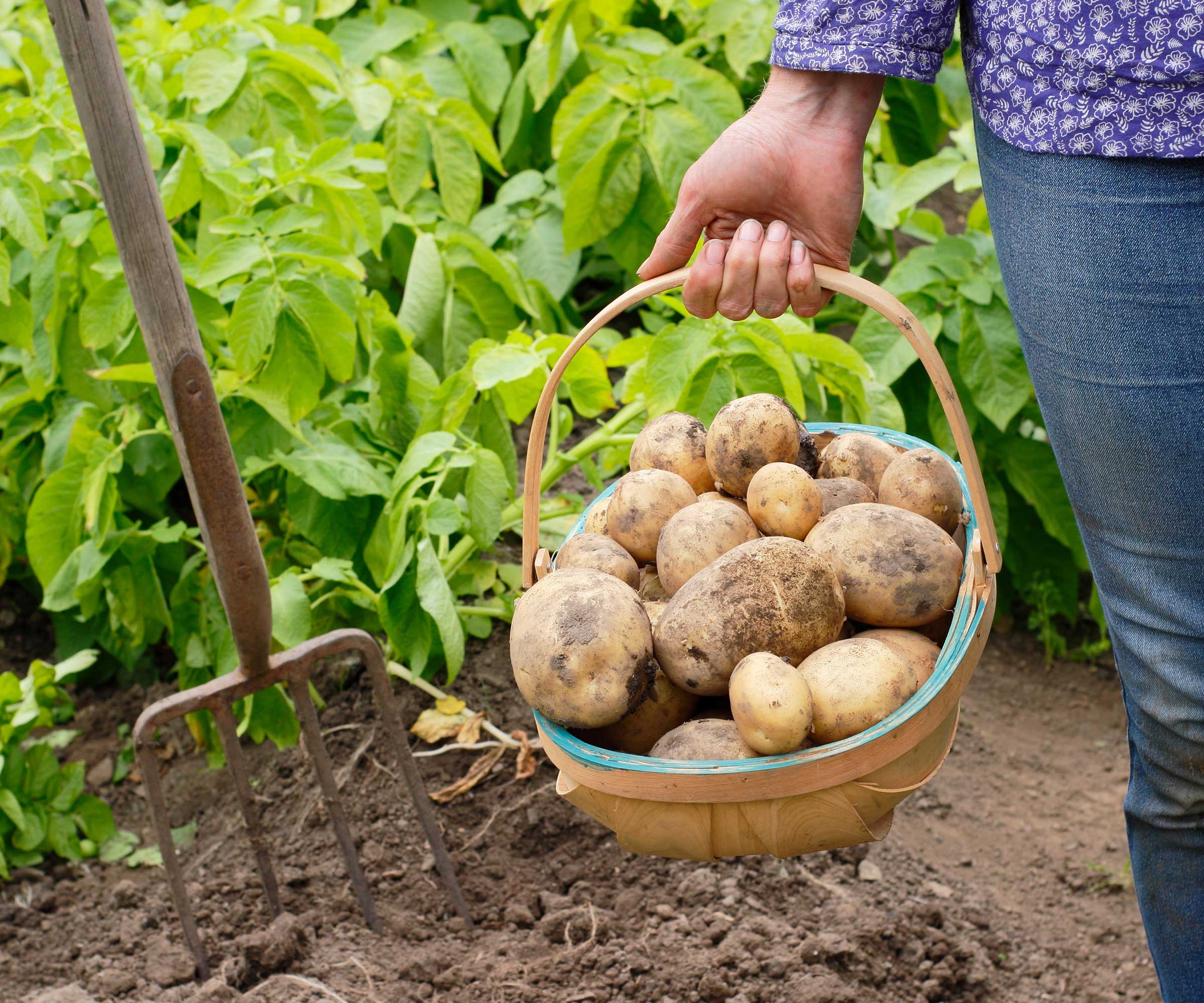
Don't let blight spoil your potato crop
What is potato blight?
Potato blight is a fungal disease that hits crops throughout their growing season, in the form of early blight and late blight. They are prevalent at different temperatures and tend to hit crops at separate times of the year.
Combined, they are two of the leading global causes of crop loss in potatoes. The famous Great Famine in the 1840s was a result of the potato crop in Ireland being devastated by the disease now known as potato blight. Growers around the globe to this day battle the very-destructive potato blight disease.
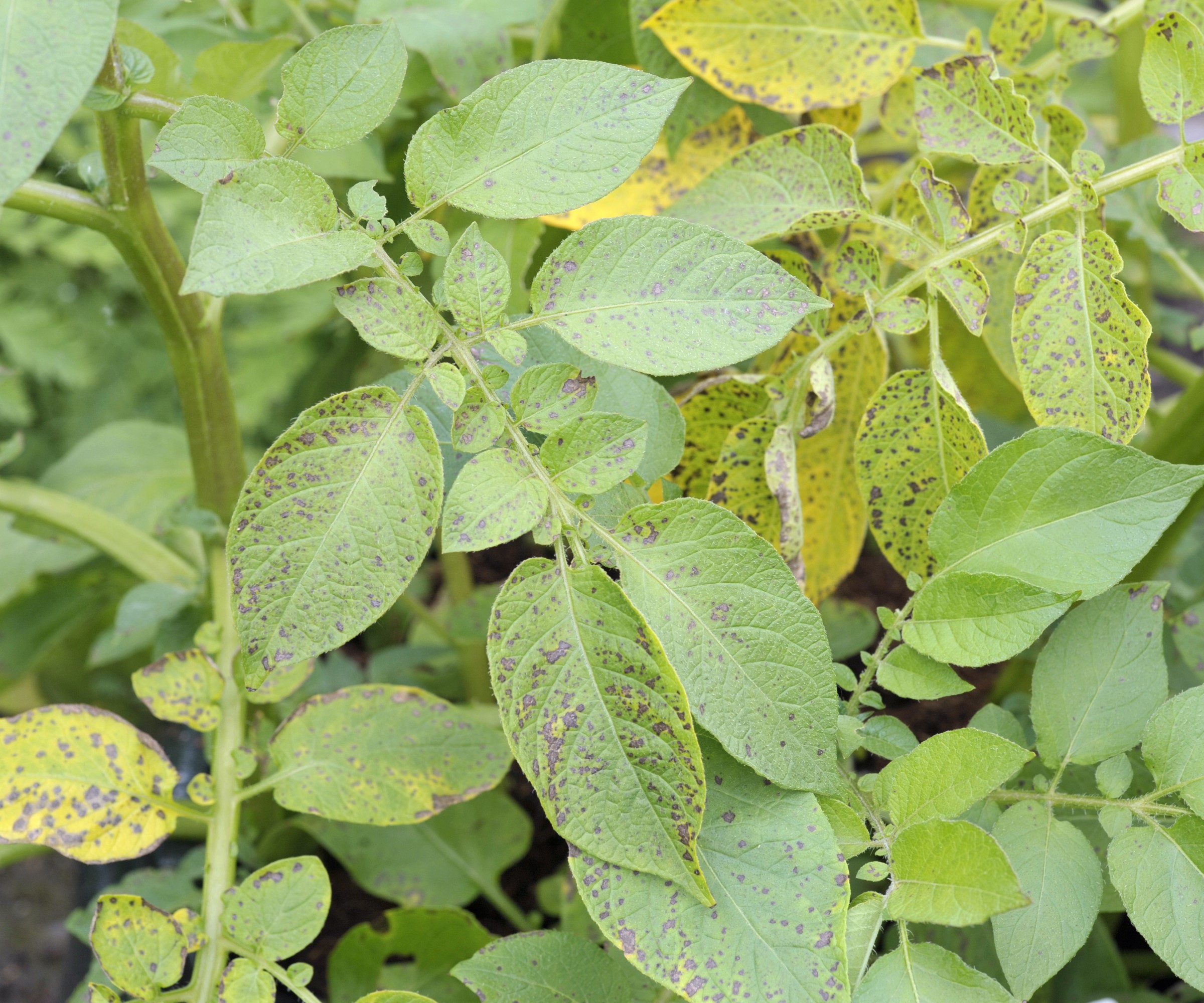
Late blight develops into brown spots on the foliage
The differences between early blight and late blight
Early potato blight is caused by Alternaria solani and it can affect leaves, stems, and tubers – impacting the overall yield of the plants. It is mainly prevalent in warmer climates and the fungus spreads in hot and dry weather. The spores of early blight are thought to be most active between 41 and 86°F and spread via wind, irrigation, and rain.
The severity of the disease can depend on certain factors, including the wetness of potato plant leaves as a result of rain, dew, or watering, and also the overall health of the plant.
Late potato blight is the more common name for traditional potato blight and it is caused by the fungus-like microorganism Phytophthora infestans. It attacks the foliage, tubers and potatoes and can spread rapidly through a plant and through a crop. It thrives in warm, wet, and humid weather, spreading quickly when there are two consecutive days over 50°F and with 6-10 hours of 90% humidity.
Late blight prefers a cooler, moister temperature than early blight. It is a disease that can also affect tomatoes and other crops in the Solanaceae plant family, such as eggplants and peppers.
Design expertise in your inbox – from inspiring decorating ideas and beautiful celebrity homes to practical gardening advice and shopping round-ups.
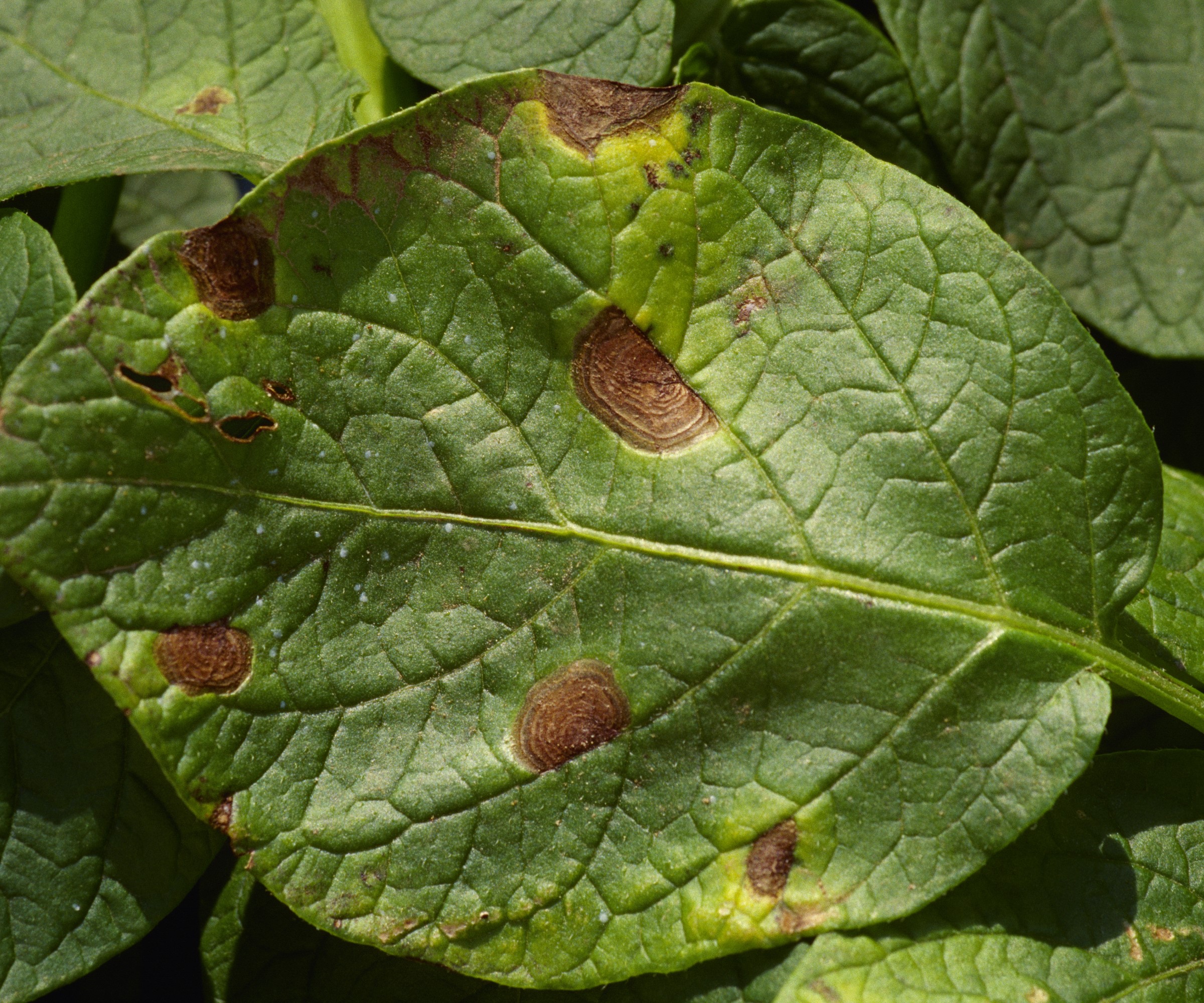
Early blight appears as dark rings that grow out and join together
What are the symptoms of potato blight?
Early blight shows as dark rings, brown spots, or lesions that spread through the plant and can merge together to form dead patches. The disease tends to hit older foliage of plants, rather than younger leaves, with symptoms first showing on the lowest parts of the plant. Stems can start to show dark brown spots and, if the disease reaches the tubers, it causes them to have dark and sunken lesions.
Late blight starts off on the leaves and stems and, if left unchecked, will travel down the plant. This causes the tubers to get infected and start to decay, until they ultimately rot. Dominique Kline, Farm Manager at The Hope Farm in Fairhope, AL, warns that blight will show as ‘small, dark green, water-soaked spots and lesions toward the leaf tips that expand into large dark brown or black spots with an oily appearance, sometimes surrounded by a yellow chlorotic halo.' It also has a distinct odor caused by the breakdown of plant tissue.
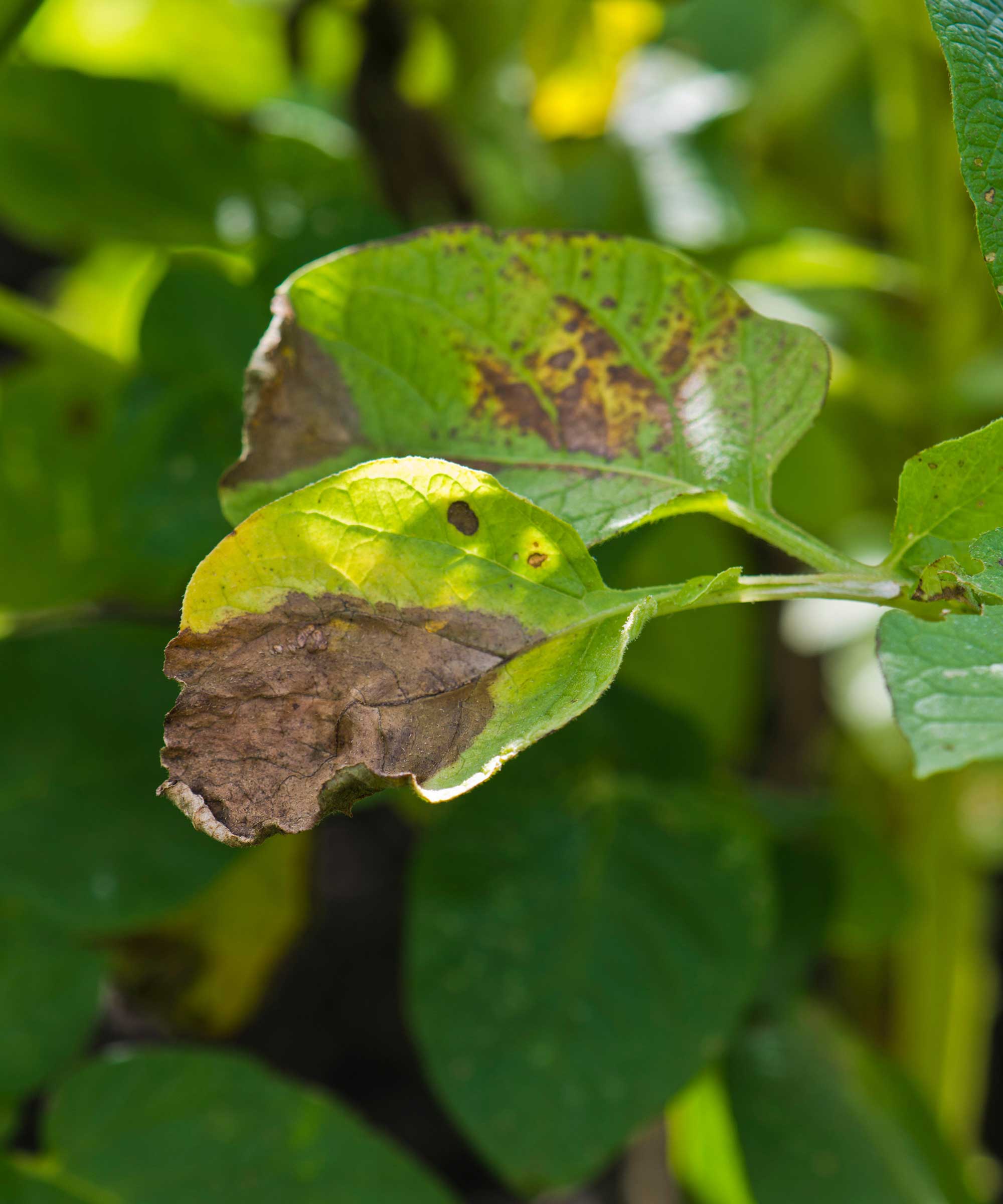
Blight travels down the plant to infect underground tubers
Tips for potato blight prevention
There are techniques and tactics you can try to prevent potato blight. This includes keeping the crop healthy and stress-free, and also choosing potato varieties that have been bred to be blight-resistant. Popular blight-resistant varieties include 'Cara', 'Nicola', and 'Kennebec' – you can get 'Kennebec' seed potatoes from Burpee.
Melvin Cubian, a gardening expert for the PlantIn app, advises properly preparing the planting bed with good drainage, incorporating organic material, soil solarization, and selecting resistant varieties before planting.
Good sanitization practices should also be put in place, such as cleaning garden tools after using them to avoid spreading any bacteria and keeping areas of your yard free of any diseased material. Also, keep a regular eye on your crop to spot the early signs of any infection – this is particularly important after wet weather and during periods of high humidity.
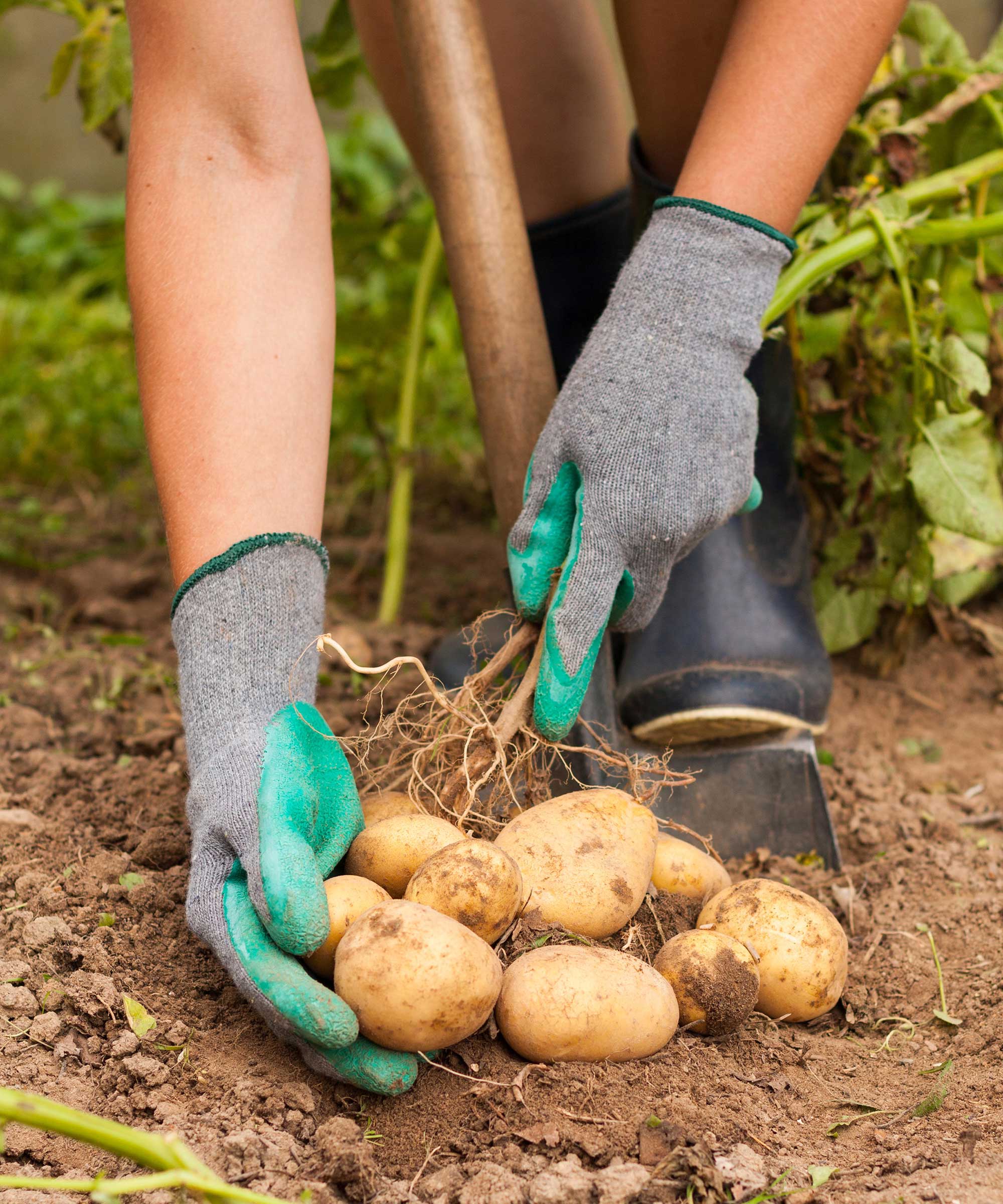
Opt for blight-resistant potato varieties to lessen the risks
How you plant and maintain your potatoes can also play a part in preventing blight. Planting your crop in a spot that gets a good level of wind and keeping space between your potato plants increases the airflow between them. This can help as the foliage will dry quicker after rainfall. Blight likes humid weather so it also pays to take water into consideration, being consistent with watering regimes, watering early in the morning and trying not to wet the foliage too much.
It is also advisable to practice crop rotation as the spores of potato blight can be washed into the soil by rain, and also infected tubers can be accidentally left behind after a potato harvest. Moving your potato crop around the vegetable garden each year ensures the crop is not being planted in an infected area. Alternatively, consider growing potatoes in containers, using fresh soil each time.
As part of crop rotation, avoid planting any other crops that are susceptible to blight, such as tomatoes, peppers or eggplants next to your potatoes.
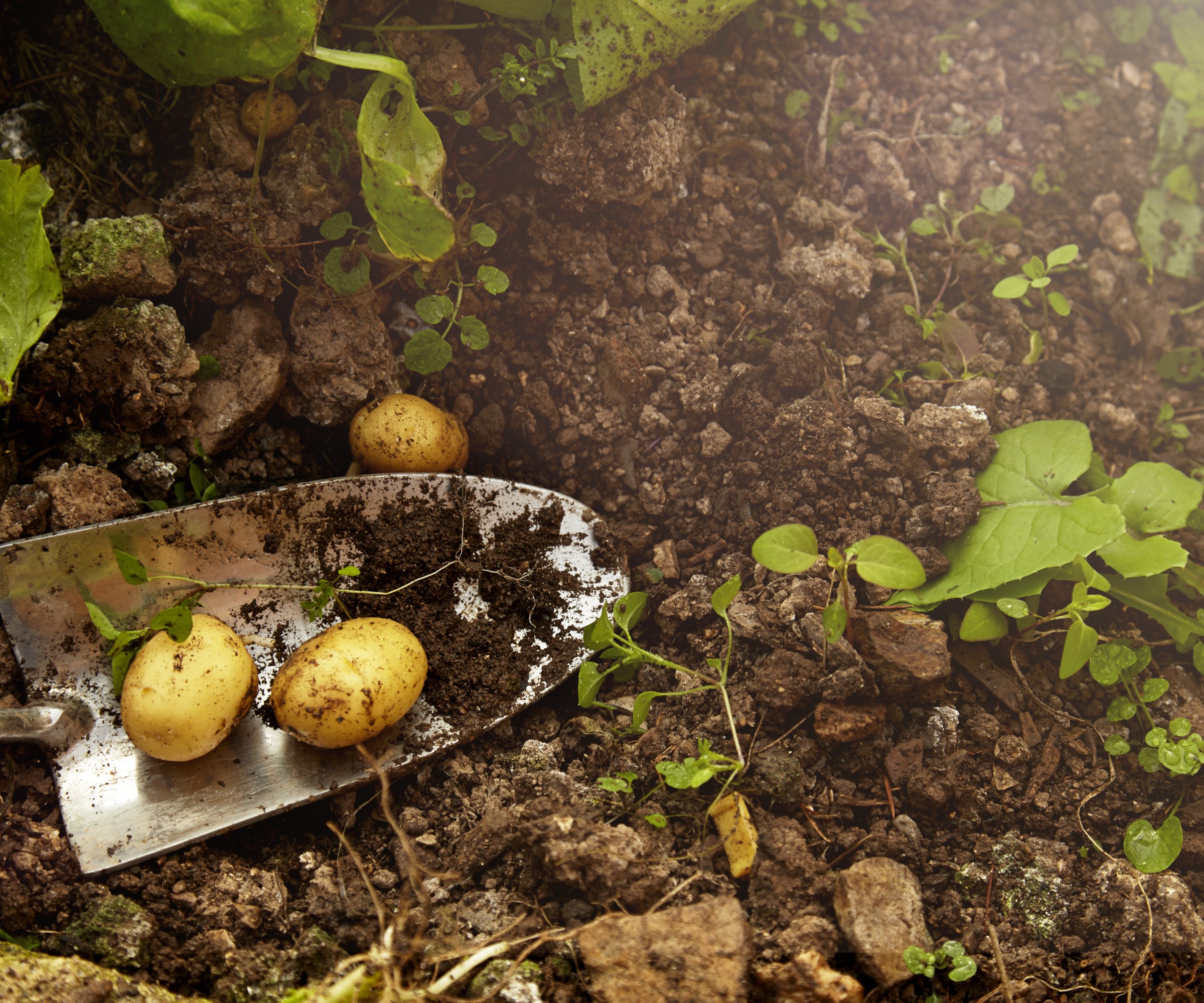
Potatoes from plants hit by blight can still be edible
How to treat potato blight
Potato blight is very difficult to kill if you do spot symptoms. Dominique Kline from The Hope Farm recommends that a copper sulfate treatment can be used against early blight – such as Captain Jack's Copper Fungicide available on Amazon – and fungicidal treatments are available that are designed ‘specifically for late blight management.' However, most fungicidal treatments for potato blight are for commercial growers, and not an option for anyone growing organically.
But, there are still ways that you can potentially save your potato crop. If you spot blight, immediately cut down and discard all the foliage and stems and leave the area undisturbed for three weeks. Even if the infection is only confined to a few plants, cut down all plants in the vicinity. This should be enough time for spores to be killed in the soil and not infect the potatoes when they are lifted.
It is advised to never use potatoes that are from blight-hit plants as seed potatoes for next year’s crop. When thinking about chitting potatoes, always use seed potatoes that are certified virus-free.
FAQs
Can I eat potatoes with blight?
Potato blight does not immediately result in tubers rotting. The fungus attacks the leaves and stems and, if left unnoticed, can travel down and infect the potatoes themselves. If potato blight is identified and the stems cut down as described before the infection spread, then any that have developed will still be edible when you harvest your potatoes.
Even if the disease has spread and infected potatoes, they are still regarded as safe if the brown and damaged sections are removed. It is down to personal choice if anyone wants to eat a potato infected with blight.
Can you reuse soil after potato blight?
As mentioned above, blight is a disease that impacts potatoes, tomatoes, and plants in the Solanaceae family. It is not recommended to grow any of these crops in areas that had blight for at least four years as the spores can live in the soil.
As part of a crop rotation plan, it is not troublesome to grow other crops in that soil the following year after potato blight. If you grew your potatoes in bags, containers, or buckets and there was evidence of blight, then that soil should not be reused anywhere in the garden and it is better to dispose of it.
Does blight survive in compost?
Blight can survive in compost and it is best practice to destroy the affected plants. However, plants affected by blight can theoretically be composted if you can get the temperature of that compost high enough to kill the bacteria, which is thought to be above 115°F.
It pays to consider the impact that could come from not composting the plant material correctly, which would be spreading the pathogens around the rest of your backyard.

Drew has worked as a writer since 2008 and was also a professional gardener for many years. As a trained horticulturist, he worked in prestigious historic gardens, including Hanbury Hall and the world-famous Hidcote Manor Garden. He also spent time as a specialist kitchen gardener at Soho Farmhouse and Netherby Hall, where he grew vegetables, fruit, herbs, and cut flowers for restaurants. Drew has written for numerous print and online publications and is an allotment holder and garden blogger. He is shortlisted for the Digital Gardening Writer of the Year at the 2025 Garden Media Guild Awards.